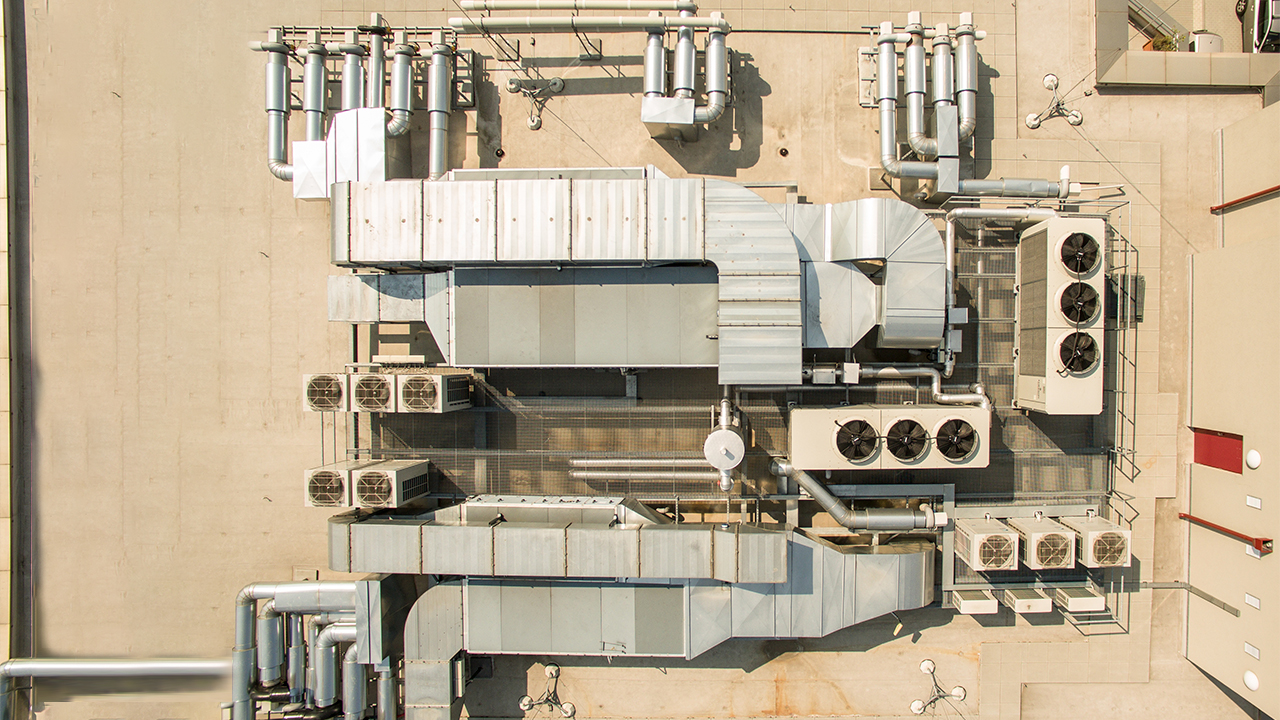Half a century ago, your commercial roof coating options were limited to two options: asphalt or gravel. Today, advances in materials science have left those coatings far behind. Roof coatings are now both more durable and more sustainable—able to improve not just the roof itself but the building below it.
Choosing the right roof coating is key, and using the right products in conjunction with your roof coating will ensure optimum performance. PHP Systems/Design is here to guide you through the decision making process and help you create a commercial rooftop that will last for years to come.
History of Roof Coatings
Commercial roof coatings have come a long way over the years. It used to be that if you had a wood or metal low-slope roof, the best coating you could hope for was paint (probably lead paint).
Aluminum was the first material to be used as a dedicated roof coating. This material is composed of a thick elastomeric bitumen compound mixed with aluminum that’s been ground to create a pigment. It’s both low-cost and effective, as it can help surfaces resist UV rays and prevent warping due to thermal shock. It’s not as durable as some other coatings, however, and it’s somewhat labor-intensive in terms of application.
Use of aluminum roof coatings—and research into more effective roof coating materials—began to accelerate in the mid-1990s with the creation of the Energy Star Program. This program required all low-slope roofs to have a reflectivity rate of .65 to .70 after 3 years of application. The idea here was to nudge roof manufacturers and building owners to adopt roofing materials that would help passively heat or cool the building underneath, thus saving energy costs.
This mandate led to the development of more technically sophisticated roofing membranes—and more robust membranes as well. Roofing manufacturers found that roof coatings not only improved energy usage, but also improved the durability and UV resistance of the roof itself, creating less waste. Although inexpensive improvements such as using a white or tan coating added better reflectivity, improved materials also helped with roof protection, shielding the roof membrane from damage inflicted by rain, hail, snow, and wind-driven impacts.
How to Choose a Commercial Roof Coating
The type of commercial roof coating you choose is important, but before you do so, take a moment to assess your current approach to roof protection. Roof coatings can go a long way in extending the longevity of your roof, but rooftop protection works best when tackled from multiple angles. To enhance the performance of your roof coating, consider additional measures of protection.
Building equipment stored on the roof is generally heavy and places stress on the roof’s surface. Equipment supports help maintain the integrity of your roof while also protecting your building’s expensive equipment. Likewise, pipe supports and duct supports have a two-prong approach to protection, distributing weight evenly over your rooftop and allowing rooftop coatings to provide maximum protection. With PHP’s zero penetration rooftop supports, you can rest assured knowing your warranty will remain intact.
Types of Commercial Roof Coatings
- Silicone Roof Coatings are both durable and easy to apply. They go on as a single layer—either rolled or sprayed—and they’re often used to rehabilitate older roofs that are still in good condition. Compared to other forms of roof coating, silicone is extremely inexpensive, and can be applied without removing the existing roof. The downside is that silicone is slippery, which can pose a hazard to personnel working on the rooftop. Use only when you have a functioning roof access walkway system to protect your workers.
- Acrylic Roof Coatings were originally designed for metal roofs only, but can also be used on bitumen, EPDM, and spray foam roofs. Acrylic is durable, low-cost, and easy to spray or roll on. The downside here is that as a water-based coating, ponding water can easily destroy it. Your roof either needs a bit more slope, or a good drainage system. In addition, it’s not as durable and will be worn away over time in environments with more extreme weather conditions.
- Polyurethane Roof Coatings have the advantage of being UV-resistant. They hold color longer—good for a white reflective roof—and they also resist thermal shock and foot traffic. In addition, you can put them on basically any roof substrate. The only downside is that it can be somewhat more difficult to spray and apply, making it more expensive than other options.
- Fluid-Applied Asphaltic Rubber Membranes are applied as a cold liquid and instantly solidify into a seamless roof surface. They can be very easy to apply—adhering to nearly any roof surface—and become effective from the moment of installation. It is completely waterproof, resistant to impacts, and can even self-seal against punctures. The big downside here is that if your underlying roof isn’t perfectly prepared prior to application, the rubber membrane can fail.
Prepare for Your Next Commercial Roof Coating with PHP Systems/Design
Roof coating technology has improved considerably, but they don’t work in isolation. You need to prepare your roof prior to each kind of application—eliminating ponding water, sealing penetrations, repairing open seams, and other necessary maintenance. Without this preparation, you won’t be able to realize the benefits of your roof coating and the system will fail.
Rooftop support systems can help you maintain your roof surface prior to a coating installation—and can keep your workers safe both during and after the coating installation itself. Our systems make installation easier by moving critical roofing infrastructure away from installation equipment, and they also offer a safe, non-slip perch for workers and installers. Plus, they offer zero penetration support, so they won’t interfere with the integrity of your roof coating. With PHP Systems/Design, you can ensure your building’s roof coating is even more effective and you don’t compromise your warranty.




